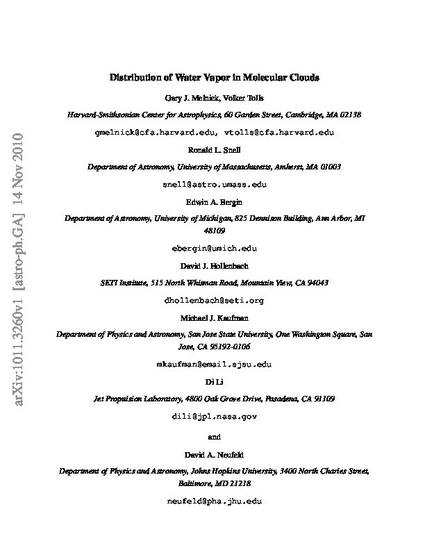
We report the results of a large-area study of water vapor along the Orion Molecular Cloud ridge, the purpose of which was to determine the depth-dependent distribution of gas-phase water in dense molecular clouds. We find that the water vapor measured toward 77 spatial positions along the face-on Orion ridge, excluding positions surrounding the outflow associated with BN/KL and IRc2, display integrated intensities that correlate strongly with known cloud surface tracers such as CN, C2H, 13CO J = 5-4, and HCN, and less well with the volume tracer N2H+. Moreover, at total column densities corresponding to A V< 15 mag, the ratio of H2O to C18O integrated intensities shows a clear rise approaching the cloud surface. We show that this behavior cannot be accounted for by either optical depth or excitation effects, but suggests that gas-phase water abundances fall at large A V. These results are important as they affect measures of the true water-vapor abundance in molecular clouds by highlighting the limitations of comparing measured water-vapor column densities with such traditional cloud tracers as 13CO or C18O. These results also support cloud models that incorporate freeze out of molecules as a critical component in determining the depth-dependent abundance of water vapor.
Available at: http://works.bepress.com/ronald_snell/16/

This is the pre-published version harvested from ArXiv. The published version is located at http://iopscience.iop.org/0004-637X/727/1/13/